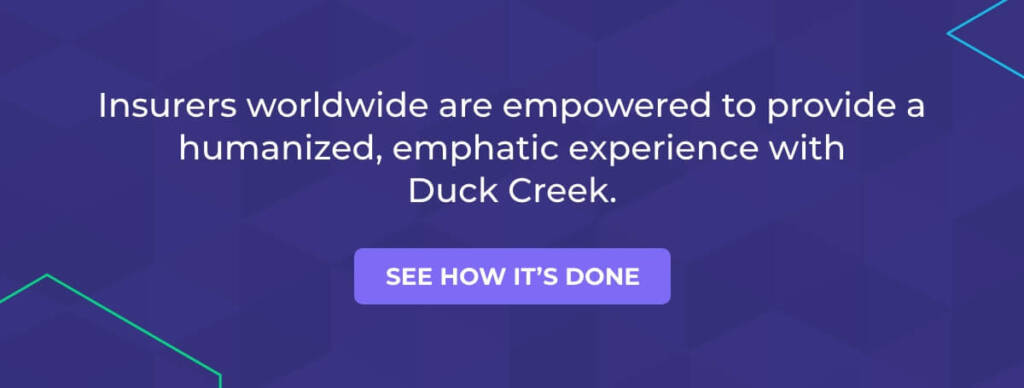In the ever-evolving landscape of the insurance industry, the role of technology has been transformative. But there’s a critical aspect that we, as leaders, often overlook amidst all the tech talk—empathy. Today, I’d like to emphasize how integrating empathy with technology can be a powerful driver for customer retention and operational efficiency.
Jump to:
- The Insurance Industry in Flux
- Understanding Empathy in Insurance
- The Union of Empathy and Operational Efficiency
- The Path Forward
The Insurance Industry in Flux
The insurance industry has seen radical changes in recent years, influenced significantly by digitalization, data analytics, and the advent of AI. While these technological advancements have brought much-needed operational efficiency, they have also created an apparent detachment from the very essence of insurance—people, their well-being, and the lasting relationships our industry is known to cultivate.
Customer expectations are at an all-time high. They demand personalized, quick, and hassle-free interactions. In such an environment, there’s a crucial need to infuse empathy into our tech-driven processes.
Understanding Empathy in Insurance
Empathy in the insurance context goes beyond simply settling claims promptly. It’s about understanding the unique needs of policyholders, recognizing their concerns, and showing a genuine commitment to their well-being. Here’s how integrating empathy can drive customer retention and operational efficiency:
-
Enhanced Customer Experience
When customers feel understood and valued, they are more likely to stay loyal. Empathy in customer interactions, even in the digital realm, leads to a superior experience. Chatbots, for instance, can be trained to respond empathetically to customer queries. Claims processes can be streamlined with a compassionate approach to handling customer hardships. Moreover, refining claim processes with a compassionate lens not only simplifies the experience but also fosters customer bond and confidence, leading to higher retention and longer policyholder relationships. -
Data-Driven Policy Recommendations
Empathy doesn’t mean guesswork. Leveraging the wealth of data at our disposal, we can craft tailored insurance products that truly meet individual needs. Empathy-driven AI algorithms can analyze user behavior and preferences to recommend the perfect coverage.
See Also: Listen to our podcast episode on the future of insurance personalization with Bryan Falchuk of Property and Liability Resource Bureau (PLRB). -
Proactive Risks Mitigation
By understanding the specific risks and challenges faced by policyholders, insurers can take a proactive approach to risk management. This doesn’t just minimize losses but also demonstrates a genuine concern for customer well-being. -
Enhanced Employee Satisfaction
It’s not just about how customers are treated. Empathy starts within your organization. Employees are happier when they have the right tools to make them more efficient, reducing manual repetitive work. To that end, companies are leveraging advancements in predictive and generative AI to guide operations, allowing them to focus more on innovation and less on their day-to-day tactical operations. The end results? They feel valued, understood, and are more likely to deliver exceptional service, which boosts customer satisfaction and retention.
See Also: Read our blog post on how empathy and a humanized experience build trust with policyholders.
The Union of Empathy and Operational Efficiency
Empathy isn’t a hindrance to operational efficiency. In fact, it can enhance it. Here’s how:
-
Streamlined Claims Processing
An empathetic approach can streamline claims processing. By understanding the needs of the policyholder, you can efficiently guide them through the claims process, minimizing bottlenecks. -
Data-Driven Decision Making
Empathetic AI can provide valuable insights into customer preferences, helping insurers make data-driven decisions that maximize efficiency and reduce operational costs. Add in the use of natural-language understanding, and insurers can further this end by bringing customer sentiment into sharp focus, driving product and coverage options, communication channel selections and more. -
Improved Underwriting
Understanding the specific risks and challenges faced by policyholders enables more precise underwriting, resulting in fewer disputes, quicker policy issuance, and reduced operational complexity. This becomes even more important when supporting your agents and brokers through the underwriting process.
Insurers must understand their unique needs and challenges, working to streamline their submission processes and make it easier to do business with them. Process automation and getting quickly to an underwriting decision goes a long way toward creating a positive impression with your agency workforce, encouraging additional opportunities with them in the future. -
Efficient Communication
Empathy-driven communication can be more efficient and effective, but it’s not only about the “right” communication with empathetic context—it’s also the timeliness of the communication itself. Near real-time communication with the right context are key drivers to assure messages are well-received, leading to quicker, more positive interactions.
See Also: Download our workbook to develop a plan for providing empathy-centric experiences.
The Path Forward
In the digital age, we need to embrace empathy as an integral part of our insurance technology strategy. By infusing it into our processes, we can elevate customer satisfaction, drive retention, and, somewhat paradoxically, improve operational efficiency.
Remember, in an industry that deals with life’s uncertainties, empathy is the anchor that keeps us steady, ensuring that technology doesn’t make us lose sight of what truly matters—people and their well-being.
As technology leaders, let us not forget the humanity in insurance. It’s not about profits; it’s about people. And that’s a mindset that will carry us forward in this ever-changing landscape, making our industry stronger and more sustainable.

